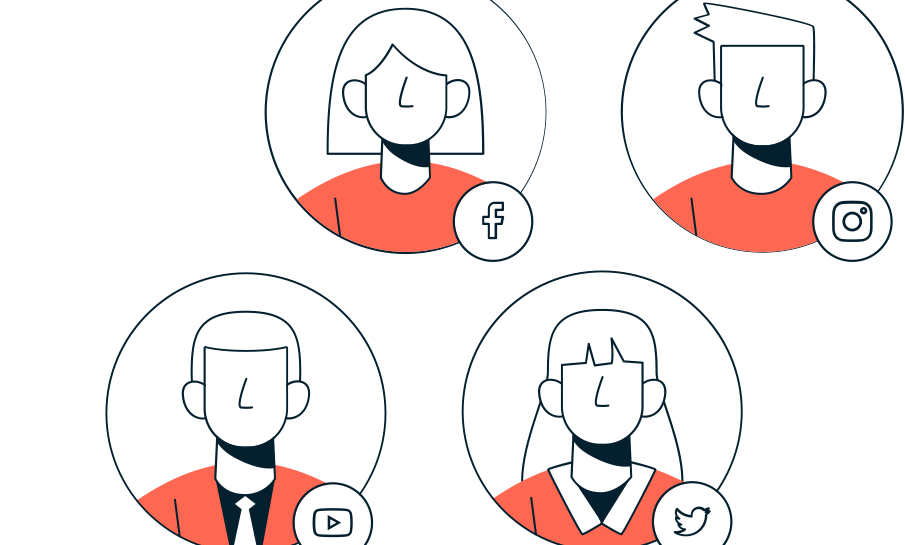Leveraging Influencer Marketing to Reach New Customers
How are some brands ALL OVER social media, and some just seem to… “not exist?”
The answer to that is influencer marketing.
But today, influencer marketing is more than just being on social media.
Influencer marketing is becoming a highly critical ingredient in marketing and how brands and start-ups kick-start growth and become the “next big thing!”
So… if you’re looking for a new and perhaps more effective way to promote your brand or products, want to stay ahead of your competition or want to get that viral “this brand is everywhere” feel, keep reading.
But before I discuss why you should be leveraging influencer marketing to reach new customers, let me quickly take one step back and explain why influencer marketing is essential in today’s trend-chasing digital world.
Table of contents
Social Media vs Google
So what’s behind this?
What is Influencer Marketing?
Enter the Micro-Influencer
How Much Does Influencer Marketing Cost?
How Can I Get Started with Influencer Marketing?
What if I told you Google is now quite what it used to be?
Don’t get me wrong—I still use Google every day, but there is a new type of search engine rapidly gaining speed: social media.
Earlier this year, Forbes published an article that posed the extremely interesting question, “Is Social Media The New Google?”
For so many years, you turned to Google when you needed to find a service or product.
But things are quickly changing.
The number of people using search engines to find brands, services, or products has declined by 30%.
According to GlobalWebIndex, 54% of social media users use social media to research products, and 71% are more likely to purchase products and services based on social media.

So what’s behind this?
First, social media platforms have evolved significantly from simple photo-sharing spaces for friends.
Today, social media platforms offer advanced video editing capabilities and extremely powerful algorithms.
Some even feature integrated shopping platforms—like TikTok Shop—that rival major brands like Amazon.
Second, 70% of Americans did not grow up with social media. It simply didn’t exist. However, the remaining 30%—Gen Z and Generation Alpha—are growing up with it, and it’s a core part of their daily lives.
On average, Gen Z spends 3 hours on social media daily, and it’s an integral part of how they connect, learn, and shop, far more than most business owners may realize.
And guess what?
Many Gen Zers, who some might still call “kids,” are now reaching their mid-to-late twenties and becoming key consumers with growing buying power.
As you can see in the chart below, the new generation (Gen Z) spends more time on social media and trusts it much more than Google. They also use social media to find and connect with brands and make decisions.

Simply put, in today’s world, people want to connect with people, not big brands. Influencer marketing lets consumers build trust and connection before they buy, discovering your product through someone they already know and trust, which leads to confident purchases.
A few years ago, I was talking to a friend who told me they were using influencers like Cardi B and Beyonce to promote their products. While that sounds AMAZING… I asked the obvious question, “How much does that cost?”
I was shocked to learn that Cardi B charges anywhere from $350,00 to $400,000 for a single post, and Beyonce charges… well… $1.8 million!
While those are extreme examples, securing a celebrity or major influencer to promote your product isn’t for every brand.
Influencer marketing at that level can be WOW expensive, and honestly, it’s not always clear if it will deliver a solid return on investment (ROI).
But now, enter the MICRO-INFLUENCER.
The micro-influencer is where the magic happens.
When it comes to leveraging influencer marketing to reach new customers, there’s a new, even more effective, and accessible approach: micro-influencers.
A micro-influencer typically has between 1,000 and 100,000 followers, but don’t let the “smaller” following fool you.
Micro influencers have much higher engagement rates and a more targeted audience, making them perfect for businesses looking to reach specific customer segments.

When it comes to micro-influencers, the cost is much more accessible than you might think.
Hiring a micro-influencer will cost you between $100 and $500 per post. However, the price can vary based on several factors, including the product you want to promote, the influencer’s follow count and engagement numbers, the platform you wish to advertise on, and the type of content you want to share.
How Can I Get Started with Influencer Marketing?

First, the product you want to advertise and its category can influence which influencers are the best fit. Some influencers specialize in specific niches, such as beauty, fitness, or tech, and connecting with those who align with your product category will increase the chances of reaching the right audience.
Another factor is follower count—influencers with larger followings tend to charge more because their posts have the potential to reach a wider audience. But it’s not just about size; an influencer’s engagement rate is equally important.
Influencers with active, loyal audiences often charge more because their followers are more likely to take action, like purchasing your product or visiting your website.
The platform also plays a role in pricing. For example, influencers on TikTok and Instagram generally charge more than on platforms like Twitter or Facebook.
The type of content you want them to create can also impact the cost. Video content, particularly long-form videos on platforms like YouTube, typically costs more than static posts or stories due to the time and effort involved.

Need help to get started with influencer marketing?
Free Homepage Design
Get a stunning, custom homepage for free!
Limited-time offer—claim yours now!






